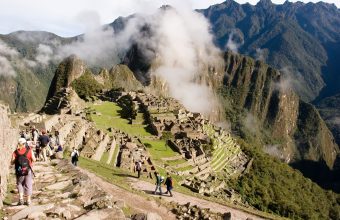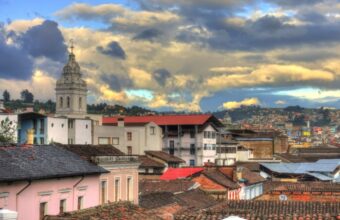The Best Galapagos Islands For Wildlife Spotting
Where to go & what to see
The Galapagos Islands have a unique ecosystem, meaning wildlife has thrived here for centuries. Don’t expect the animals to be shy—their indifference to your presence is what makes this such a great place to visit.
Galapagos sea lion
Found all over the Islands, there are around 50,000 Galapagos sea lions living in the archipelago. Whether diving to depths of 500 metres, swimming among snorkellers and bathers, or simply lounging on sandy beaches, the sea lion is a favourite among visitors.
Where to see the Galapagos sea lion: Everywhere
Killer whale
Orcas, otherwise known as killer whales, are actually members of the dolphin family. As permanent inhabitants of the Galapagos’ waters, they are frequently seen, particularly in the Canal Bolivar between Isabela and Fernandina.
Look out for the orca’s famous black and white colouration as they spy hop through the waters hunting marine mammals and fish.
Where to see killer whales: Canal Bolivar, between Isabela and Fernandina
Bottlenose dolphin
Although not endemic to the Galapagos, bottlenose dolphins are regular visitors to the Islands. Playful and inquisitive, the dolphins feed in pods of 20 to 30, often swimming alongside cruise ships and yachts.
Look for the dolphin’s short beak and sickle-shaped dorsal fin. However, it will probably be the dolphin’s playfulness that catches your attention.
Where to see the bottlenose dolphin: Everywhere
Galapagos flamingo
The Galapagos flamingo is one of the largest of the world’s five species of flamingo. Feeding on crustaceans and water plants, their distinctive black and pink beaks filter silt and mud from their food.
Found all over the Galapagos, flamingos are generally shy and wary of humans, so viewing them is best done from a distance.
Where to see flamingos: Floreana, Santiago and Santa Cruz
Blue-footed booby
There are three booby species on the islands, the blue-footed, red-footed, and Nazca boobies. The blue-footed booby is the best-known, with its distinctive blue feet making it easy to spot. The booby’s blue feet also play a big part in courtship, with female boobies choosing males with the brightest blue. The birds perform an elaborate dance during courtship, beginning with the male giving the female a stick. Boobies often mate for life.
Where to see the blue-footed booby: Española, Genovesa, North Seymour
Galapagos penguin
The Galapagos penguin is the only species of penguin that lives in the tropics and is also the smallest. Endemic to the region, the Galapagos penguin mates for life and swim at speeds of up to 35km per hour when hunting.
In 1982, 77% of the Islands’ penguin population was wiped out after a particularly strong El Niño event. Numbers have been recovering ever since, with the population now around 2,000.
Where to see the Galapagos penguin: Isabela, Fernandina, Bartolomé
Giant tortoise
Perhaps the Islands’ most famous resident is the Galapagos giant tortoise. In fact, the archipelago is even named after the giant tortoise, with Galapagos meaning saddle in Spanish.
The giant tortoise can live for up to several hundred years and its population is estimated at around 20,000 by the Galapagos Conservation Trust.
Where to see giant tortoises: Santa Cruz, Isabela
Land iguana
One of three land lizard species inhabiting the Galapagos, the land iguana is a placid vegetarian despite its fearsome image.
Look out for males engaging in headbutting competitions over territory, or for the relationship with finches who pick ticks off their backs.
Where to see land iguanas: Santa Cruz, Isabela, Fernandina
Marine iguana
Unique among lizards, the marine iguana is the world’s only seagoing lizard. Found only in the Galapagos, the lizards vary in size and colour between islands.
Famously unattractive -- Darwin once called them ‘hideous-looking’ and the ‘most disgusting, clumsy lizards’ -- marine iguanas are actually surprising agile when in water, feeding on algae and seaweed.
Where to see marine iguanas: Everywhere
Green sea turtle
The Galapagos green sea turtle lives in the tropical and sub-tropical waters of the Pacific islands, reaching 1m in length and almost 150kg in weight. The females return to the Galapagos Islands to lay eggs, which incubate for up to 55 days before hatching.
Green sea turtles are often seen surfacing for air in calm water and are often encountered by snorkellers.
Where to see green sea turtles: Santa Cruz, Fernandina, Santiago











